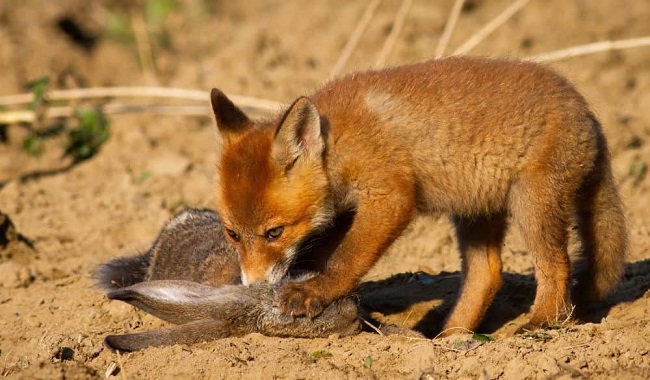As cuddly and adorable as they are, rabbits are unfortunately a primary food source for many predators. This is due to their relative abundance and smaller size. But what animals feast on these fluffy creatures?
The list might surprise you. In this detailed article, we delve into the natural predators of rabbits and understand the key role rabbits play in the ecosystem.

The Usual Suspects: Foxes and Wolves
These wild canids have long been associated with hunting rabbits. Foxes, due to their opportunistic and versatile nature, often feed on rabbits when the opportunity arises. Wolves, while they tend to go after larger prey, will not pass up a rabbit if the chance presents itself.
Read Also:
Birds of Prey: Eagles, Hawks, and Owls
Birds of prey, also known as raptors, are another significant threat to rabbits. Eagles, hawks, and owls have keen eyesight to spot a rabbit from high up in the sky, swooping down quickly for the kill. Owls, being nocturnal, pose a significant threat to rabbits during the night.
The Silent Stalkers: Cats and Dogs
Domestic cats and dogs, given the chance, may also prey on rabbits. This is particularly true for feral cats and dogs, which have reverted to their hunting instincts for survival. However, domesticated cats, despite being well-fed, often hunt rabbits due to their natural predatory instincts.
Reptilian Predators: Snakes and Alligators
Certain large snake species, such as pythons and boa constrictors, are known to eat rabbits. Alligators and other large reptiles may also consider a rabbit a tasty meal if one strays too close to the water’s edge.
Survival Tactics of Rabbits
Despite being at the lower end of the food chain, rabbits are not helpless. They have developed several defensive adaptations to escape predation. These include acute hearing to detect the stealthiest of predators, powerful hind legs for fast and erratic running, and the ability to breed rapidly to ensure the continuation of their species.
The Unseen Threat: Stoats and Weasels
Though small in size, stoats and weasels are some of the most feared predators of rabbits. These agile hunters are adept at chasing rabbits through complex burrow systems where larger predators can’t reach. Their slender bodies allow them to navigate tight spaces while their ferocity belies their small stature.
Exotic Predators: The Cheetah and the Jackal
In certain parts of the world where rabbits’ habitats overlap with exotic predators, the list of threats expands. In Africa, for instance, the fast and agile cheetah is known to prey on rabbits when larger game is scarce. Similarly, jackals, known for their opportunistic feeding habits, do not hesitate to include rabbits in their diverse diet.
The Human Factor: Hunting and Habitat Loss
Not to be forgotten, humans pose a significant threat to rabbits, both through hunting and habitat destruction. Rabbits have long been hunted for their meat and fur, while expanding human settlements and agriculture often result in significant loss of rabbit habitat, indirectly contributing to their predation by forcing them into areas populated by their natural predators.
The Role of Rabbits in the Ecosystem
Rabbits play an essential role in their ecosystems, not only as prey but also as consumers of vegetation. By feeding on grasses, forbs, and woody plants, rabbits aid in plant succession and soil distribution. Their digging activity helps in soil aeration and the mixing of soil layers.
Moreover, the burrows they dig provide shelter for a wide range of other animals. By understanding the role of rabbits within their ecosystems and the threats they face, we can make more informed decisions to maintain biodiversity and uphold the balance of nature.
Read Also:
Conclusion
The circle of life may seem harsh, particularly for animals like rabbits that sit lower on the food chain. However, it’s crucial to remember that these interactions play a significant role in maintaining the balance in our ecosystem.
Predators help control the rabbit population, ensuring they do not overgraze vegetation. By understanding these dynamics, we can better appreciate the interconnectedness of nature and strive to protect its delicate balance.
It’s not an easy life for a rabbit in the wild, with predators lurking in the sky, on land, and in the water. However, their survival strategies ensure the continuance of their kind, adding to the rich tapestry of biodiversity that graces our planet.
























